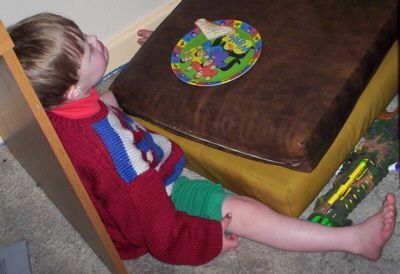

Potty Training Toddlers and Children, boys and girls.
Potty Training can be difficult. Here is how I, as a psychologist, potty trained my children – 4 boys and one 1 girl – including one with Down Syndrome and related physical disabilities, such as hypotonia, low muscle tone.
Potty training a child can be difficult, especially if the child has Down Syndrome, hypotonia, or another disability or health problem.
Yet, being potty trained is vitally important. Without the potty training, boys and girls will miss out on good things, as they are more likely to be shunned and teased, particularly as they get older.
The potty training strategy presented here, will help toilet train or potty train a boy or girl, with or without disability and normally the POTTY TRAINING IS VERY FAST.
WHEN TO START POTTY TRAINING CHILDREN: BOYS AND GIRLS .
Psychologists found that potty training boys and girls can start when the child is aged two years or more.
Contrary to some sources that once advocated starting potty training as young as a few months old, psychologists found younger boys and girls kept having so many accidents, in spite of intensive potty training, that potty training was then considered to be of little value prior to age two years.
If the boy or girl has an intellectual disability, then delaying the first attempt at potty training until the child is 3 or 4 years old, is reasonable.
As a rough guide, IQ around 70, first attempt at potty training is around age 3 years. For IQ around 50, 4 years of age might be a good starting time for potty training. You can try potty training before this, but don’t get upset if it fails or doesn’t go very well.
POTTY TRAINING INDEX, but I suggest you just read your way through all of this page. Underlined means clickable.
Potty Timing and Potty Training does work.
Potty Timing or Potty Training – what’s the difference?
Potty Training and the need for consistency.
Potty Training Boys and Girls – the procedure, hands on stuff.
Potty Training Boys and Girls – The Enormous Value Vicarious Learning.
Potty Timing – the procedure, hands on stuff.
Potty Timing and Potty Training Boys and Girls – the complimentary procedures.
Potty Timing and Potty Training – the value of task analysis.
Potty Timing and Potty Training – potty chairs and other aids.
More Training Suggestions to help you along
Here are some links from our toilet timing and training page – for older boys and girls – which you may also find helpful:
Potty / Toilet Timing converting to Potty / Toilet Training.
Toilet Timing and Toilet Training – the Day care centre approach and hands on stuff.
Toilet Timing and Toilet Training – overcoming negativity from authority, eg, school.
Toilet Timing and Toilet Training – Toileting aids.

Potty Training does work.
Having potty trained our boys and helped with the potty training of my daughter, I didn’t expect to have too much trouble with potty training my last boy, Jacob, even though he has Down Syndrome and hypotonia – low muscle tone.
The potty training procedures I used with my other boys, are essentially the same as the potty training procedures I use with Jacob – although Jacob had the advantage of having a potty training cartoon thrown in, which Jacob did seem to relate to – so the potty training procedures have worked with all our kids.
Remarkably, for a boy with Down Syndrome, potty training was achieved with Jacob when he was about three years old.
Potty Timing or Potty Training – what’s the difference?
The difference between potty timing and potty training is a simple one.
With potty timing, you are trying to teach boys or girls to go to the potty at certain times each day – for example, on waking up, after breakfast, 10am, 11am … With potty timing, the kid does not have to understand their bodily urge to urinate, they go because it is their time to go.
Potty training involves boys and girls going to the potty when they feel the urge to urinate.
Kids with Down Syndrome or other disability may learn quickly, like Jacob originally did in about a week or two, but all too often potty training may span several years when a disability is present. Sometimes the kid may be 10 years old before potty timing is learnt, some boys and girls never become potty trained.
Potty Training and the need for consistency.
The potty training was lost, however, because his daycare centre didn’t support potty training until kids were much older than Jacob. Instead of potty training, Day Care encouraged potty timing.
So, Jacob’s potty training became non-existant for much of the time. We lost the accomplishments of the potty training we did real fast. Since losing the potty training and in spite of prolonged potty training over the next two years, by us, his day care, his kindergarten, the best we achieved was limited potty timing.
Nappies alone cost over $2000, since our first potty training. We are so disappointed the day care centre did not support Jacob’s potty training when we had Jacob potty trained the first time.
Potty Training Boys and Girls – the procedure, hands on stuff.
Jacob’s potty training – the first time:
As a psychologist, I learned about potty training boys and girls and how to achieve fast potty training, during my university days. I saw no point in dragging the potty training out.
The potty training involved me taking him to the toilet with me, so that he could watch and learn.
We also watched a cartoon video on potty training, which Jacob watched several times a day ( Tommy’s Potty Training – by the Intellectual Disabiltiy Services Council, Adelaide, South Australia ). There are other potty training videos of course.
We encouraged going to the potty by giving plenty of fluid to make sure he had wee to pass – very important for fast potty training.
We put a little salt on his food and gave more dryish foods to encourage drinking, so that his frequency of weeing would increase, which again, is very important for fast potty training.
When he urinated on the potty, we gave lots of verbal praise. Kids love praise.
No day time nappies and we kept him at home, so that potty training was confined to one environment to start with.
Using this potty training procedure, Jacob was potty trained within two weeks. We had succeeded with the fast potty training.
Why does this potty training procedure require the kid to wee more often? We wanted the potty training to be fast and the opportunity to potty train is not there if there is no wee there. The more the fluid intake, the more often will be the wee coming out and the more opportunity for the potty training to take place.
Potty Training Boys and Girls – The Enormous Value of Vicarious Learning.
Vicarious learning refers to learning things through watching and imitating others.
With potty training, vicarious learning is taking advantage of the way boys and girls learns and perceives the world at a young age. A young boy and girl, or even an older kid with intellectual disability, will often believe they were part of something they were watching.
With potty training, we take advantage of this unique learning by reading Jacob his potty training book and use his name. For example, the page may contain a drawing of a boy going to the potty, so we say, Jacob’s going to the potty. Another picture shows the boy being given great praise, so we give Jacob the praise for going to the potty when we read it to him – as if he had really gone.
This vicarious learning enables us to reinforce potty training behaviour, without Jacob having to physically go to the potty.
Potty Timing – the procedure, hands on stuff.
As pointed out earlier, the potty training was then lost, so, up until he was over five years old, we used potty timing – although potty time worked at kindergarten and day care in a limited way, we had only very minimal success with potty timing at home.
Essentially, with potty timing, you let them know it is time to go to the potty, you take them to the potty, get them to go and then praise them.
The praise helps to reinforce the potty timing cooperation from the kid. In time, the kid may pick up potty training from being potty timed.
Potty Timing and Potty Training Boys and Girls – the complimentary procedures.
With potty timing and potty training boys and girls , you also build up the other behaviors involved around the potty.
Examples of the other potty training and potty timing tasks includes, pulling pants and underpants up and down; if boy, teaching them to keep the penis pointed down in the underpants – minimises the effect of a wee accident. Washing hands. Drying hands.
Potty Timing and Potty Training – the value of task analysis.
A procedure which can help identify the steps in potty training and potty timing is called task analysis.
With task analysis you break up a task into several smaller tasks. For example, with potty training and potty timing, hand washing is important. Hand washing involves going to basin, turning tap on, rinsing hands, soaping hands, rubbing hands on palms, on backs of hands, in between fingers, rinsing hands until soap is off, turning tap off.
Generally speaking, the more difficult the boy and girl finds the potty training or potty timing tasks to be, the more the tasks have to be analysed into smaller steps.
Potty Timing and Potty Training Boys and Girls – some information on potty chairs and so on.
Some potty training and potty timing information I need to include:
Jacob initially started out in potty training with a potty on the floor when he was little. As he grew, the potty training required a larger potty – which was still on the floor. Some people find potties that buzz or play sounds when urinated in to be helpful – We never used them.
More Potty Training Suggestions to help you along
Jennifer wrote this piece on potty training and asked for it to be added to our potty training and timing page. It’s good, down to earth potty training information, so well worth a read.
I just read your page on potty training and the woman whose daughter wouldn’t pee in the potty.
We had a sort of similar problem with potty training. My daughter got to the stage where she was often dry in her nappies, and would pee the moment I took them off, usually leading to floods on the changing mat.
My Mother suggested the obvious remedy to whip off the nappy & dump her on the potty.
We carried on like this for a long long time until she was dry all day for 3 days in a row. Then I put her in cotton training pants, with cotton leggings over them.
The training pants absorb most but not all of the urine, so you get wet leggings but no wet floors (unless she is sitting at the time).
The moment she was in these training pants she stopped going in the potty and started weeing in her pants. I think she enjoyed the attention of being changed when she was wet.
I could not do any positive reinforcement on the potty because she just would not use it. She could sit there for ages, then pee in her pants within seconds of being away from it.
I finally got her to use the potty by putting her feet in a pan of water.
This was based on the observation that she often peed in the bath. That worked a treat, and after a few goes with the pan of water she started peeing in the potty without having her footbath.
I’m told that for really stubborn children splashing water on their genitals can get them going. [From Donald: Iin my country, Australia, this would likely be considered an act of child sexual abuse and or physical abuse – please check with your local child protection authority before using this suggestion.]
We got a musical potty that played tunes when she went, this was great for positive reinformcement as you can make a fuss the moment the child wets the potty without having to sit there staring fixedly between their legs and waiting for something to happen!
She still misbehaved quite a bit until one day she went on a bookshop floor where her father was playing with her. He was utterly fed up and made no attempt to hide it. He yelled for me, stormed out of the shop, dumped her unceremoniously on me and told me to take her away and sort it out without him. She absolutely adores her father and was uttery dismayed by this, howled inconsolably for longer than I’ve ever known her do before. However it seemed to do the trick, she went from several accidents a day to maybe one a week, and some weeks none after that.
All the recived wisdom I’d heard was not to make a fuss about messes, and praise successes, but it seems her Father’s disapproval was what really made her try to get the toilet thing right.
She still has to be put on the toiler regularly, and very rarely asks, but at least she is going when she is put there, and rarely goes in between times. Whenever she does in hindsight it’s because we left it too long before putting her on the toilet.
So it might be worth passing on the advice about trying using water to make a reluctant child go, and once they are going musical pottys are great for telling when it’s happening, but being dumped by a loved one seems to be the ultimate sanction!
FROM DONALD: Good suggestions I think, but always remember that what works for one kid, may not work for another, but good suggestions well worth considering.
Potty Training – contact us for more help.
I hope all this potty training information is helpful. If you need more potty training information, please email us. After potty training four boys and one girl, I think we should be able to help in the potty training of your boy or girl.

Leave a Reply
You must be logged in to post a comment.